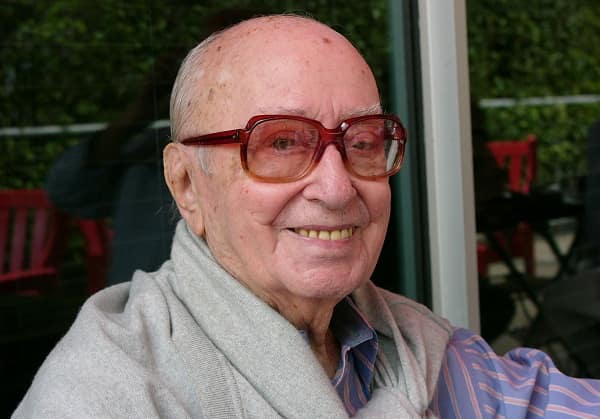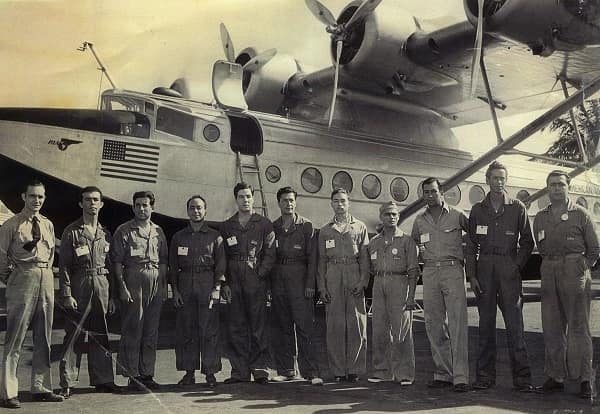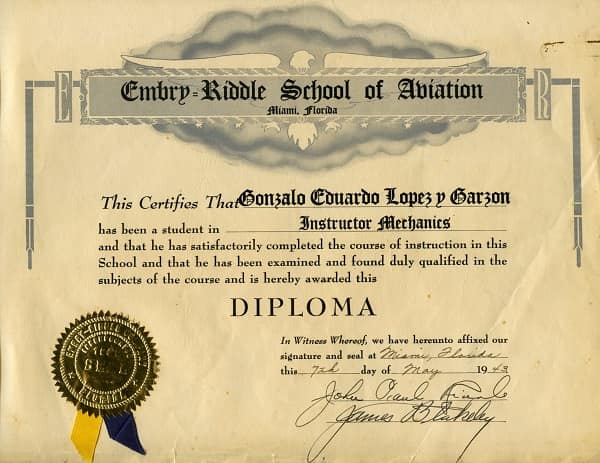100-Year-Old Alumnus Reflects on International Education, Embry-Riddle and a Diverse Career

Centenarian Zalo Lopez-Garzón (‘42, MC) was one of the first international students at Embry-Riddle’s School of Aviation.
*The following story was originally published in Lift, Embry-Riddle's alumni publication.
On the first Sunday in December 1941, Gonzalo “Zalo” Lopez-Garzón (‘42, MC) was hosting a party at a park near his home in Buenos Aires, Argentina. The celebration, complete with music from his portable radio, was to mark his upcoming departure for the United States to study at Embry-Riddle. Suddenly, from his radio came a surprise announcement. “They said Japan has attacked the United States at Pearl Harbor,” Lopez-Garzón recalls.
The recipient of an Inter-American Aviation Training Program (IAATP) scholarship, Lopez-Garzón immediately feared the worst. “That was the end of the picnic, the end of my aspirations. I went to the Embassy and I asked, ‘Will this cancel my scholarship?’ and they said, ‘No, everything goes on in war.’”
Lopez-Garzón, who celebrated his 100th birthday in February and is believed to be Embry-Riddle’s oldest living alumnus, was one of 526 students representing countries from all over Central and South America who came to Embry-Riddle in 1941-42 under the federally-funded IAATP. Though multiple schools were involved in the program, he picked Embry-Riddle. “The reason I insisted on going to this school in Miami is that the Embry-Riddle School of Aviation was the first international coming together of people from so many countries for the service of aeronautics in the United States,” he says.
Embry-Riddle Archivist Kevin Montgomery confirms Lopez-Garzón’s recollection. Students participating in the IAATP were the first recorded international students to attend Embry-Riddle. Contracted through the Civil Aeronautics Administration and the U.S. State Department, the program created a new education section at the Embry-Riddle Technical School: the Latin American Department. The new department provided a dual education program training both students from South America and U.S. citizens who planned to seek jobs in South America. The students learned about all aspects of the ground phase of aviation, including power plants, welding, sheet metal, instruments and radio. The scholarship provided 2,300 hours of training over a 16-month term.

International Yearbook
It was a dream come true for Lopez-Garzón. The native Argentinian had been interested in aviation technology since he was a child, and he adored American culture, too. A gregarious student, he took it upon himself to create the first-known, student-produced Embry-Riddle class yearbook. “I had a book and at the end of the courses I asked everyone from my core of students for a picture, and everyone wrote something about our friendship,” he says. He recently donated the leather-bound book to the Embry-Riddle archives as a memorial of its first international students.
“The notion of internationality, in my estimation it started right there. Embry-Riddle became an international school, but it started with us,” says Lopez-Garzón. “I felt that one day these students should be recognized as the origin of the internationality of the university.”
Dean Emeritus Bob Rockett, who led the creation of the university archives during his 35-year tenure at Embry-Riddle, says the wartime training of students from other countries helped put Embry-Riddle on the map; and was a significant milestone in the life of what would become the world’s largest aviation university. “Zalo was enrolled in Embry-Riddle during the most important years of our history. The training of international students during the war took us from a little for-profit corporation into the university that we are today, and the people who built that foundation came from all over the world,” Rockett says.
 Career Switch
Career Switch
Lopez-Garzón received his diploma in Instructor Mechanics on May 7, 1943. He returned to Argentina in December of that year, after completing an additional six months of on-the-job training in instrumentation repair at Embry-Riddle. Soon after taking a job in the Airframe and Engines Division of the Dirección General del Material Aeronautíco, he was appointed to lead the Instruments Department. In 1956, he began teaching aeronautical instrumentation classes at the National School of Aeronautics in Argentina.
In addition to aviation, Lopez-Garzón had a penchant for interior design. When an opportunity arose in Miami for him to showcase his design skills, he took a leap of faith.
“This design exhibition in Miami invited designers from different countries to come. I participated in the exhibition, and I won with a portable bar that I designed. From there on I was very successful,” he says.
Upon discovering that interior design was his “true calling,” he pursued it with a passion. His proudest accomplishment was to work with Maurice Gusman, a Miami philanthropist who chose Lopez-Garzón to design his Key Biscayne condominium. Lopez-Garzón’s work became renowned internationally, as well. One of his favorite overseas projects was a mansion built on Lake Maracaibo in Venezuela.
His achievements in the field earned him a lifetime membership to the American Society of Interior Designers. In 1972, he retired and took up another hobby: travelling with his wife, Ofelia, now deceased. “We traveled to every part of the world except Asia. The farthest east we went was Egypt. The best part of my life was to be able to travel,” he says.
Lopez-Garzón celebrated his 100th birthday on Feb. 23, 2015, almost 72 years after graduating from Embry-Riddle. “My brother lived to 102 years old. Longevity runs in my family,” he says.
Watch a tribute to Zalo Lopez-Garzón, dedicated by his adult children.
Editor’s Note: The following book was used as a reference for this article: Craft, Stephen G. and Bender, Alan R., Wings of Legacy: The History of Embry-Riddle Aeronautical University, 2010.

 Alan Marcos Pinto Cesar
Alan Marcos Pinto Cesar